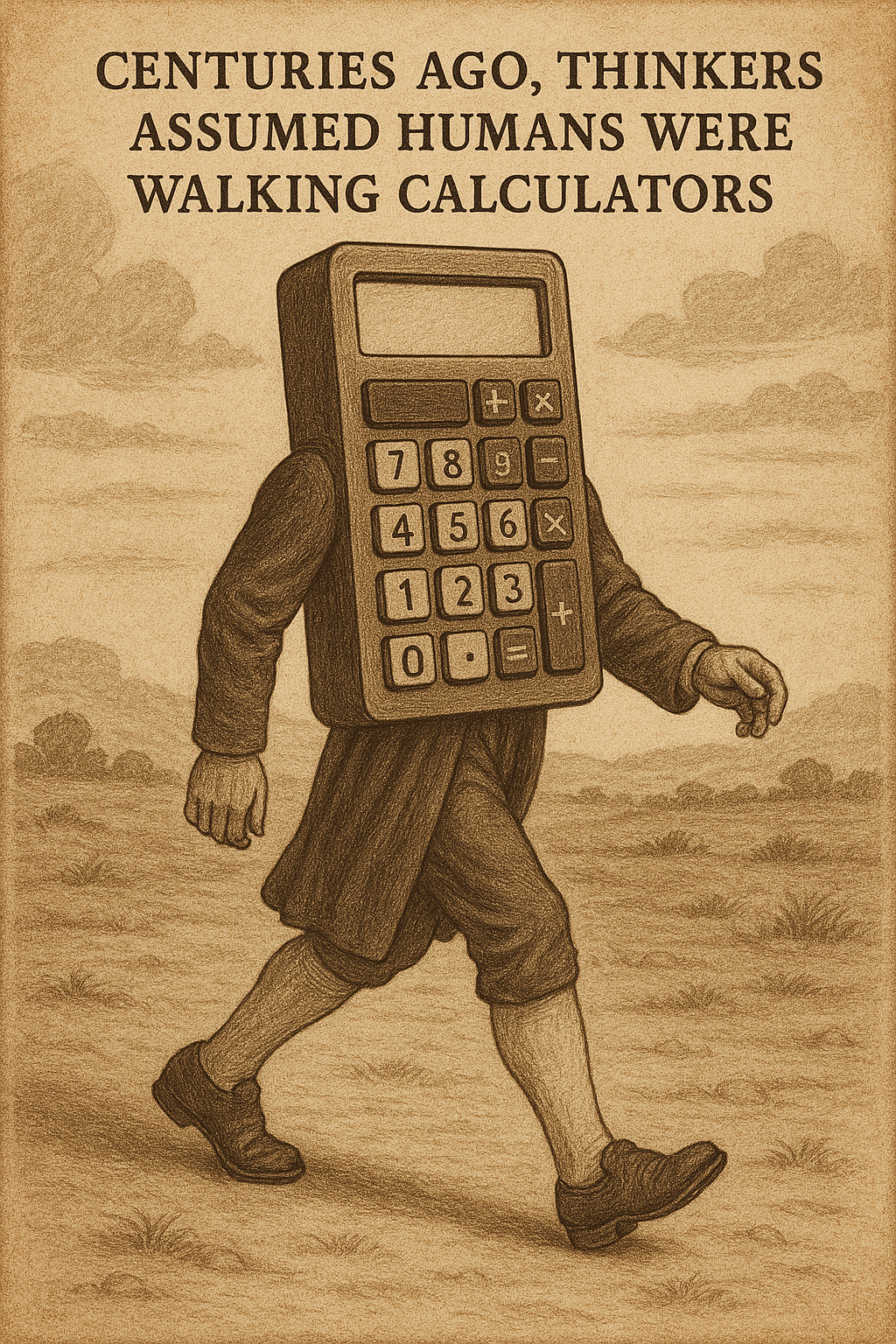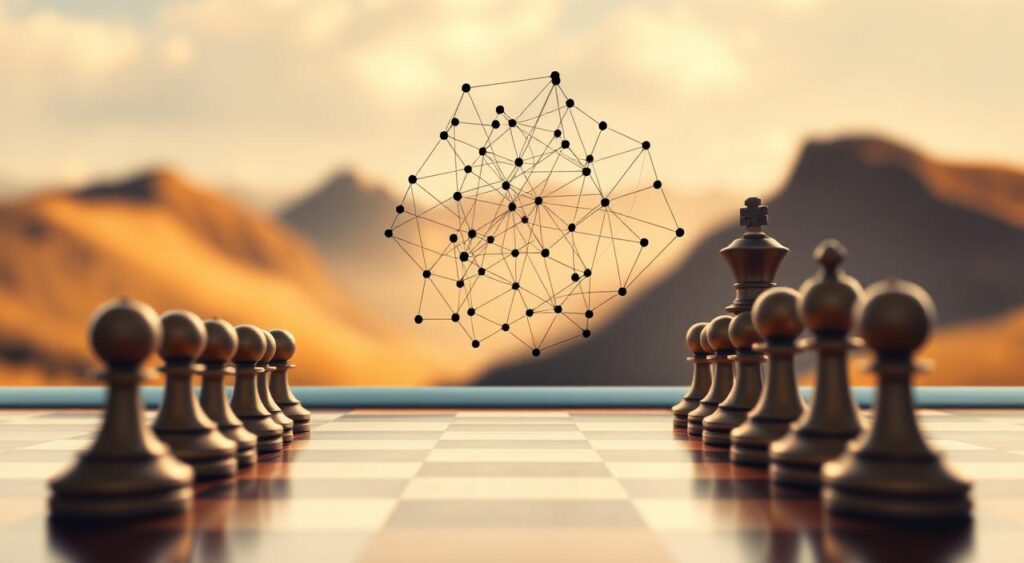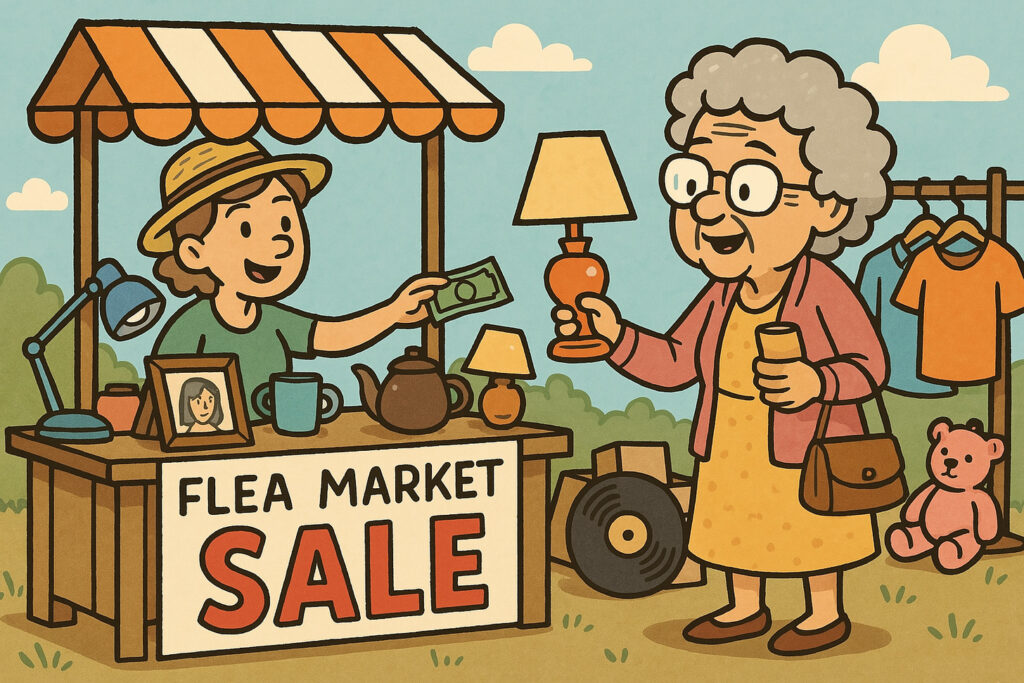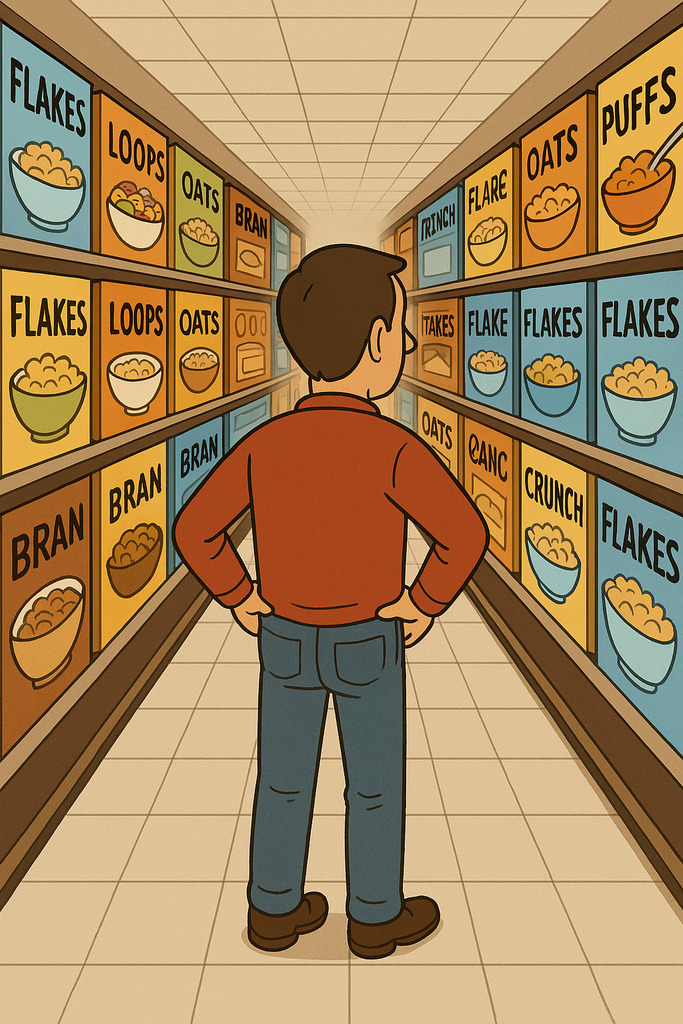Ever made a quick decision only to second-guess it later? You’re not alone. The bounded rationality mental model explains why our choices often fall short of “perfect” logic. Nobel Prize winner Herbert Simon introduced this idea, showing how real-world decisions clash with textbook theories of flawless analysis.
Simon argued that humans face three big hurdles: limited information, time pressures, and brainpower constraints. Instead of weighing every option, we use simple rules of thumb called “heuristics” to avoid decision paralysis.
Imagine picking a phone plan—you’ll likely compare a few features, not every carrier’s full catalog. That’s bounded rationality in action!
This concept reshapes how we view everyday choices. It’s not about being irrational but recognizing our brain’s practical workarounds. For example, a parent might choose a school based on proximity rather than analyzing 20+ metrics.
The goal? Make good enough decisions without drowning in much information.
Key Takeaways
- The bounded rationality mental model explains why humans make “satisficing” choices, not perfect ones
- Herbert Simon’s theory highlights limits in information, time, and cognitive capacity
- Mental shortcuts (heuristics) help navigate complex decisions efficiently
- Real-world examples include quick purchases or career path selections
- Understanding this model improves self-awareness in personal and professional choices
Introduction to Bounded Rationality
Ever picked a restaurant based on proximity rather than reviews? That’s the bounded rationality mental model at work. This theory explains how we navigate choices when facing real-world limits—like incomplete data or ticking clocks.
Perfect rationality assumes we analyze every option. But in practice? We’re more likely to grab the first decent solution. Imagine grocery shopping: you check prices for three cereals, not all 40 brands. Why? Limited time and energy force practical shortcuts.
| Decision Factor | Perfect Rationality | Real-World Approach |
|---|---|---|
| Information | Full research | Partial data |
| Time | Unlimited hours | Quick judgment |
| Options | All possibilities | Top 3 picks |
How often do you rely on gut feelings? Most people do. Constraints like work deadlines or budget caps push us toward “good enough” choices. It’s not laziness—it’s smart strategy when resources are tight.
Next time you make a snap decision, remember: it’s your brain’s clever way to handle life’s limitations. We’ll explore how to refine this process in later sections.
Historical Background and Theoretical Foundations

Centuries ago, thinkers assumed humans were walking calculators. Early economists like Adam Smith imagined people making choices through cold, hard math. This “homo economicus” idea dominated classical theories—until reality crashed the party.
By the 1940s, cracks appeared in this perfectly rational rationality model. Researchers noticed something odd: real people often rarely compared all options due to incomplete information.
Herbert Simon’s breakthrough came when he asked: “What if our brains have bandwidth limits?” His 1957 work introduced a game-changing theory—decisions aren’t about perfection, but practicality, influenced by human psychology and simple rules of thumb.
Let’s break this evolution down:
| Aspect | Classical View | Modern Reality |
|---|---|---|
| Decision Maker | Perfect calculator | Time-pressed human |
| Information Use | Complete data | Selected facts |
| Goal | Optimal choice | “Good enough” solution |
This shift reshaped economics and psychology. Where older models demanded endless analysis, Simon showed how constraints force smarter shortcuts. Think of it like grocery shopping: you don’t test every apple—you grab three, check for bruises, and pick the best-looking one.
Today’s researchers blend these insights with human psychology. Nobel winner Daniel Kahneman proved how emotions sway decisions, cementing bounded rationality’s role in understanding real-world behavior. Next time you make a quick choice, remember—you’re using century-updated brainware!
Understanding the Bounded Rationality Mental Model
Have you ever booked a vacation spot after checking just three reviews? That’s how most of us operate when making choices. This approach isn’t random—it’s shaped by cognitive boundaries that guide our everyday selections.
Our brains aren’t supercomputers. They filter options based on what’s practical, not perfect, using available information and simple rules of thumb.
Think about job hunting. You might scan five listings instead of fifty. Why? Limited time and energy force us to prioritize. We weigh key factors like salary or commute time, ignoring less critical details.
This “satisficing” strategy helps avoid overwhelm while still finding viable solutions, illustrating how individuals make decisions under conditions of loss aversion.
| Ideal Scenario | Real-World Choice |
|---|---|
| Analyzing all data | Using available facts |
| Unlimited research time | Quick comparisons |
| Perfect outcome | Acceptable results |
How often do you second-guess your picks? Probably less than you think. When information is scarce, our minds fill gaps with educated guesses. Imagine choosing a Netflix show—you’ll likely pick based on thumbnails and titles, not full episode summaries.
What shortcuts did you use in your last big decision? Recognizing these patterns helps us refine our approach without chasing impossible standards. After all, life’s too short to analyze every cereal box in the aisle!
Cognitive Limits and Heuristics

Ever felt your brain freeze when choosing between 50 shampoo brands? That’s your working memory hitting its limit. Think of it like a sticky note—it can only hold 4-7 pieces of information at once. No wonder we struggle with complex decisions!
Your Brain’s Storage Unit
Working memory acts like a temporary clipboard. When shopping for a laptop, you might compare three models instead of twenty. Why? Your mind automatically filters options to avoid overload. Research shows we make choices faster when options are limited—a key part of bounded rationality theory, which explains how individuals simplify their decision making using simple rules of thumb to cope with incomplete information and the effects of loss aversion.
Shortcuts to the Rescue
Heuristics are like decision-making life hacks. Imagine picking a plumber:
| Ideal Approach | Real-World Hack |
|---|---|
| Read 15 reviews | Trust a neighbor’s recommendation |
| Compare all pricing | Choose mid-range option |
These shortcuts save time but have trade-offs. Ever bought cereal just because you recognized the box? That’s the “familiarity heuristic” in action—quick but not always optimal.
How many times this week did you use rules of thumb? Maybe you defaulted to a favorite coffee order when rushed. Sound familiar? Our brains prioritize speed over perfection when facing constraints.
Next time you’re stuck deciding, remember: your cognitive limits aren’t flaws. They’re built-in features helping you navigate an overwhelming world. What’s one shortcut you’ve used today?
Decision-Making Under Constraints
Ever grabbed lunch at the nearest café instead of hunting for the “best” spot? That’s how most of us make decisions when time or details run short. When deadlines loom or facts are fuzzy, we settle for solutions that work—not perfect ones.
Time and Information Limitations
Picture this workday scenario:
| Ideal Choice | Real-World Pick |
|---|---|
| 30-minute meal research | 3-minute sandwich grab |
| Full product comparisons | Two quick reviews |
| Optimal outcomes | No-crisis results |
Why do we operate this way? Herbert Simon’s groundbreaking theory shows our brains prioritize speed over perfection. Limited information forces us to lean on trusted cues—like choosing a mechanic your coworker recommends instead of vetting 10 shops.
Ever bought headphones without reading specs? That’s “satisficing” in action. We weigh key factors (price, basic features) and ignore the rest. It’s not lazy—it’s smart resource management when facing constraints.
Next time you make a snap choice, ask: Did this solution meet core needs? Sometimes “good enough” is exactly right. What quick decision are you glad you didn’t overthink yesterday?
Classical Economic Models vs. Bounded Rationality

Ever wish you could calculate dinner options like a math whiz? That’s exactly what economists once assumed we do. The homo economicus model paints humans as flawless calculators—always choosing the mathematically optimal path. But let’s face it: nobody has time to compute the “perfect” meal while hangry.
Classical economics relies on expected utility theory. It suggests we weigh every possible outcome, assign probabilities, and pick the highest-value option. Like choosing a phone plan? You’d need to analyze all 50 carriers, predict your data usage for the next year, and calculate taxes. In reality? You’ll probably check three providers and pick the one with free streaming.
Homo Economicus Compared to Real Decision-Makers
| Homo Economicus | Real Humans |
|---|---|
| Unlimited time for analysis | 15-minute lunch break decisions |
| Perfect information access | “I’ll just Google it quickly” |
| Always maximizes benefits | “This pizza place is good enough” |
Why does this gap matter? Textbook models work in spreadsheets, not real life. Imagine shopping for jeans—the “rational” approach would involve measuring every pair’s thread count and stitching angles. You? You’ll try two sizes and grab what fits okay.
Researchers found that decisions made under real-world pressures resemble speed chess more than slow-motion calculus. We use rules of thumb (“Avoid crowded stores”) and past experiences (“Last time blue jeans shrank”). It’s not lazy—it’s survival in a world of endless choices.
Next time you make a “good enough” pick, remember: you’re not broken. You’re just human—and that’s how smart decision-making actually works.
Procedural Rationality and Satisficing
Ever settled for a “decent” option to avoid decision fatigue? That’s satisficing—a blend of “satisfy” and “suffice.” Nobel winner Herbert Simon coined this term to describe how we pick acceptable solutions rather than hunt for perfection. Think of apartment hunting: you’ll tour five units, not fifty, until one checks your must-have boxes.
The Satisficing Principle Explained
Satisficing works like a mental stop sign. Once an option meets your baseline needs, you choose it. Imagine job offers: if a role pays well and has reasonable hours, you might accept it without negotiating endlessly. This strategy saves time and energy for bigger decisions.
Why don’t we optimize every choice? Research shows exhaustive analysis often leads to worse outcomes. A study found shoppers who limited comparisons to three products reported higher satisfaction than those who reviewed ten+ options. Your brain knows when to say “close enough.”
Procedural Approaches in Decision Sciences
Procedural rationality focuses on how we decide, not just the result. It’s like baking: follow steps, adjust as needed, and accept imperfections. For example:
| Ideal Process | Real-World Version |
|---|---|
| Analyze all car models | Test-drive two vehicles |
| Read every review | Check star ratings |
| Perfect match | “Meets 80% of needs” |
This step-based approach helps manage complex decisions without overload. Next time you make a quick choice, ask: Did this solve my problem? If yes, you’ve mastered satisficing. Sound familiar?
Ecological Rationality and Environmental Influences

Ever chosen a lunch spot because it’s on your usual route? That’s ecological rationality—the idea that our surroundings shape how we make choices. Instead of overthinking, we use environmental cues like familiar landmarks or store layouts to decide quickly.
This theory shows how physical spaces simplify decisions. Imagine grocery shopping at your regular store. You know where the milk is, which aisles have snacks, and which checkout line moves fastest. These patterns let you navigate without a map—your environment does the heavy lifting.
| Environment | Ideal Approach | Real-World Behavior |
|---|---|---|
| New city | Research all restaurants | Pick places near your hotel |
| Familiar park | Analyze every path | Take your usual walking route |
| Local market | Compare all prices | Head to trusted vendors first |
Why does this matter? Our brains match decision-making styles to what’s around us. If you’re rushing to work, you’ll likely take the same commute instead of testing five new routes. The environment provides shortcuts—like street signs or crowd movements—that help us act efficiently.
Next time you make a quick choice, notice how your location guides you. That coffee shop you visit daily? Its easy access and menu familiarity make it a no-brainer pick. Ecological rationality isn’t about being perfect—it’s about using your surroundings smartly.
Psychological Perspectives in Bounded Rationality

Ever bought something just because it was on sale? Our brains often play tricks when making choices. Cognitive biases—those sneaky shortcuts in our thinking—shape how we process information and make decisions daily.
Bounded Rationality Mental model: Shortcuts Backfire
Confirmation bias makes us favor facts that match our existing beliefs. Imagine researching phones: you might ignore negative reviews about your favorite brand. Anchoring works differently. If a store shows “$500 marked down to $300,” that first number sticks in your mind—even if the real value is $250.
| Bias Type | How It Works | Real-Life Example |
|---|---|---|
| Anchoring | First number influences choices | Negotiating salaries using initial offer |
| Confirmation | Seeking supporting evidence | Only watching news that aligns with views |
| Availability | Overvaluing recent memories | Buying earthquake insurance after tremors |
Why do these patterns exist? Our brains evolved to conserve energy. Limited rationality means we rely on quick judgments rather than endless analysis. Think about your last online purchase—did you scroll through all 200 reviews? This reflects the effects of cognitive limitations on how we make decisions in various situations.
These biases aren’t flaws. They’re natural results of our decision-making systems working overtime. Ever chosen a restaurant because you recognized its logo? That’s your brain using familiar cues to save time, illustrating the bounded rationality model in psychology.
How many biased choices have you made this week? Recognizing these patterns helps us pause and rethink. After all, understanding our mental shortcuts is the first step toward smarter decisions.
Role of Emotions in Decision-Making

Ever bought concert tickets on a whim? Your brain’s emotional centers might’ve hijacked the wheel. Neuroscientists found the amygdala—our emotion processor—often overrides logic when making quick decisions.
This explains why fear or excitement can derail even the most rational plans, highlighting the effects of cognitive limitations in our decision-making process.
Emotions act like mental shortcuts. When stressed, you might snap-agree to a project deadline without checking your calendar. Studies show emotional arousal speeds up decision making but lowers accuracy, which can be explained by the theory of bounded rationality.
Think of impulse purchases: that flashy gadget felt essential in the moment, but buyer’s remorse followed, illustrating the constraints of available information.
| Emotional Choice | Logical Approach |
|---|---|
| Buying snacks when hungry | Sticking to a grocery list |
| Quitting a job post-argument | Sleeping on career changes |
| Splurging during celebrations | Budgeting for special events |
Why does this happen? The theory of bounded rationality suggests our brains use emotions to compensate for limited information. Faced with uncertainty and incomplete information, feelings become decision-making fuel.
Ever chosen a partner based on chemistry rather than a checklist? You’re not alone, as people often rely on simple rules of thumb in such situations.
But there’s a catch. While emotions help us act fast, they can lead to suboptimal outcomes due to constraints and limitations. Anxiety might make you skip a job interview that’s actually a great fit. Excitement could push you to overspend on a “limited-time” deal, illustrating loss aversion in decision making.
How many choices this week did your gut feelings steer? Recognizing emotional influence helps balance speed and rationality. Next time your heart races during a decision, pause. Ask: “Is this fear talking—or actual facts?”
In the realm of economics and psychology, understanding how individuals make decisions can lead to better strategies and outcomes.
Applications in Economics and Business

Ever signed a contract after skimming just the key terms? Businesses face similar shortcuts daily. By embracing bounded rationality, companies streamline choices when full analysis isn’t practical. Think of bulk purchasing agreements—managers often approve deals using 3-4 metrics rather than 20-page reports.
Game Theory and “Less is More” Effects
Imagine two firms negotiating a merger. If both sides demanded perfect data, talks would stall. Instead, they focus on top priorities like valuation and timelines. This mirrors game theory’s “I cut, you choose” method—simplified rules lead to faster, fairer outcomes.
| Business Scenario | Ideal Approach | Real-World Tactic |
|---|---|---|
| Pricing Strategy | Analyze all competitors | Match 2-3 key rivals |
| Supplier Negotiations | Review every contract clause | Focus on cost/delivery terms |
| Marketing Campaigns | Test 50 ad variations | Launch 3 top-performing drafts |
Why does less data sometimes win? A study found retailers offering 6 yogurt flavors outsold those with 24 options. Overload paralyzes customers—curated choices drive action. Ever bought a phone because the store rep highlighted three features?
That’s strategic information filtering in play, illustrating how people make decisions based on much information and simple rules of thumb.
Next time you face a complex decision, ask: What’s the minimum intel needed? Like chess players making timed moves, businesses thrive by balancing speed and rationality. In situations where information processing is crucial, how many times this month did you skip fine print to keep projects moving? This reflects models of bounded rationality in decision making.
Implications for Health and Personal Choices

How often do you grab a snack because it’s quick, not because it’s nutritious? Our daily health choices often reflect practical compromises rather than perfect plans. When juggling work, family, and self-care, we rely on shortcuts to survive decision fatigue.
Imagine needing to pick a medical treatment. You might research three options instead of twenty—limited time and complex jargon force quick judgments. A study found patients often choose therapies based on doctor recommendations rather than independent research. Why? Trust becomes a mental shortcut when information feels overwhelming.
| Ideal Health Choice | Real-World Decision |
|---|---|
| Reading all nutrition labels | Grabbing pre-cut veggies |
| Weekly meal prep | Ordering salad delivery |
| Daily 1-hour workouts | 10-minute home exercises |
Even experts “satisfice.” A dietitian might choose frozen berries over fresh ones when rushed. A therapist could recommend a 15-minute mindfulness app instead of hour-long sessions. These choices aren’t failures—they’re adaptations to real-life constraints.
How do you decide on sleep routines or skincare? Most of us stick to habits that feel “good enough” rather than chasing perfection. Sound familiar? Your brain prioritizes consistency over endless optimization.
Next time you make a health-related choice, ask: Did this meet my core need? Sometimes, a walk around the block beats skipping exercise entirely. What quick wellness decision are you proud of this week?
Bounded Rationality Mental Model Examples

How many times have you grabbed the first item on the shelf without checking others? Stores know we use simple rules like packaging colors or product placement to decide quickly.
A shopper might pick cereal because the box looks familiar—not because they compared every nutritional label. That’s our brain’s way of managing overload.
When Familiarity Becomes a Shortcut
Brand recognition acts like a mental GPS. Imagine walking down a pharmacy aisle: you’ll likely grab pain relievers from a company you’ve used before. Studies show 64% of consumers stick to known brands when rushed. Why? Trust built through past experiences reduces decision-making stress.
| Ideal Shopping | Real-World Choice |
|---|---|
| Read 12 reviews | Trust “#1 Best Seller” tags |
| Compare 10 prices | Choose mid-range option |
| Analyze all features | Focus on 2-3 key benefits |
Ever bought headphones because the store display highlighted noise cancellation? Retailers design these cues to align with our cognitive shortcuts. A famous jam study found shoppers were 10x more likely to buy when offered 6 options vs. 24. Less clutter = faster decisions.
This “good enough” approach isn’t lazy—it’s how we navigate daily choices efficiently. Do you default to your usual coffee order when running late? That’s your brain prioritizing speed over perfection. What quick decision saved you time this week?
Strategies to Improve Decision Processes

Struggling to make choices when overwhelmed? You’re not alone. While our brains have natural limits, simple tweaks can sharpen how we handle complex situations. Let’s explore practical ways to work smarter within your cognitive bandwidth.
Three Tactics to Cut Through the Noise
Start by breaking big decisions into bite-sized steps. For example, house hunting becomes manageable when you split it into budget checks, neighborhood tours, and feature rankings. This aligns with research-backed theory on using bounded rationality effectively.
| Challenge | Ideal Strategy | Real-World Hack |
|---|---|---|
| Too many options | Analyze all data | Compare top 3 choices |
| Time pressure | Full research | Use priority checklist |
| Information overload | Read every detail | Focus on 2 key metrics |
Checklists are your secret weapon. Create a quick “must-have” list for recurring decisions like hiring or purchases. A study found nurses using decision aids made 23% fewer errors—proof that structure beats guesswork in decision making.
Limit information intake to what’s truly relevant. When buying a car, track fuel efficiency and safety ratings instead of reading 100+ reviews.
This satisficing approach respects your brain’s natural rationality and acknowledges the limitations of available information without demanding perfection.
How often do you feel stuck when making choices? Small upgrades like these help you navigate constraints while staying decisive. Remember: better decisions come from smarter frameworks based on the theory of bounded rationality, not endless analysis.
Future Directions in Rational Decision-Making Research

What if your phone could predict your best rational decisions before you make them? Researchers are now blending rationality studies with artificial intelligence to create smarter tools.
These innovations aim to help people make decisions and navigate complex choices while respecting natural cognitive limits and the constraints of bounded rationality.
New studies use real-time data tracking to map how individuals process information. Wearable devices and apps now record decision patterns during shopping, commuting, or work tasks. This shift from lab experiments to real-world observation makes findings more actionable for everyday life, highlighting the effects of limitations in decision making.
Here’s how modern research compares to traditional methods:
| Old Approach | Emerging Techniques |
|---|---|
| Small controlled groups | Global data crowdsourcing |
| Paper surveys | AI behavior prediction |
| Monthly analysis | Instant feedback loops |
Businesses already use these insights to design better user interfaces. Streaming services suggest shows based on viewing habits rather than endless browsing. Could similar decision aids revolutionize healthcare or education next? Understanding bounded rationality can help in these situations.
The future of theory development looks collaborative. Economists team up with neuroscientists to study brain activity during high-pressure choices.
These partnerships could create hybrid models that reflect how humans actually think—not just how they should. This integration of psychology and economics could refine our understanding of decision making.
What breakthroughs might emerge in the next decade? Perhaps apps that warn about cognitive overload during shopping sprees. Or workplace systems that adapt to employees’ decision-making styles.
One thing’s clear: understanding our natural limits helps build tools that make rationality work for us, not against us. Utilizing simple rules of thumb can streamline the information processing involved in everyday decisions.
Conclusion
How often do you stick with what works instead of chasing perfection? This everyday balancing act lies at the heart of Herbert Simon’s groundbreaking theory. Our brains aren’t designed to analyze every detail—they’re built to find solutions that meet immediate needs while conserving energy.
Simon’s research revealed three universal constraints: incomplete facts, ticking clocks, and finite mental bandwidth. Rather than viewing these limits as weaknesses, we can see them as adaptive tools. Quick choices like selecting a commute route or approving a project draft demonstrate our ability to prioritize effectively.
Consider your last major purchase. Did you compare every option or focus on key features? Recognizing these patterns helps us refine our approach without self-judgment. Studies show people who acknowledge their cognitive boundaries make 23% fewer decision-related errors over time.
Embracing this mindset transforms how we navigate life’s endless options. It’s not about lowering standards—it’s about aligning our strategies with how humans actually think. Whether choosing insurance plans or weekend plans, we thrive by blending intuition with intentionality.
What quick choice will you make differently tomorrow? Keep this insight handy: sometimes ‘good enough’ isn’t just practical—it’s profoundly rational.


